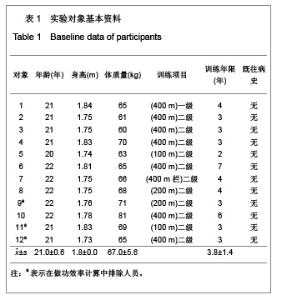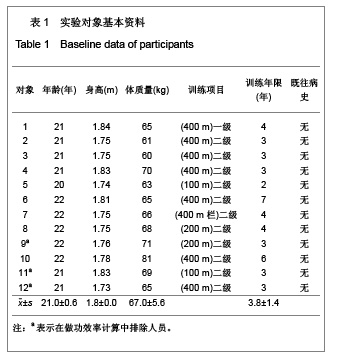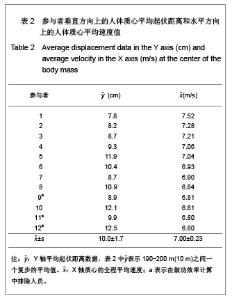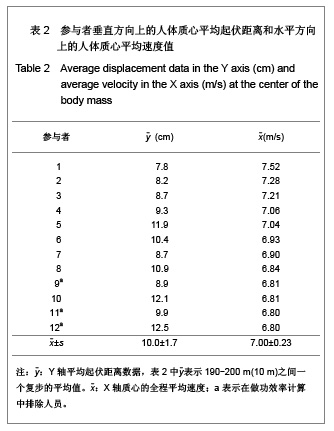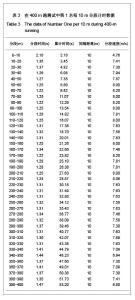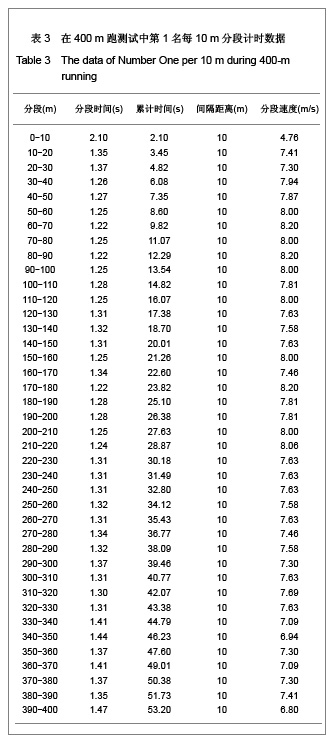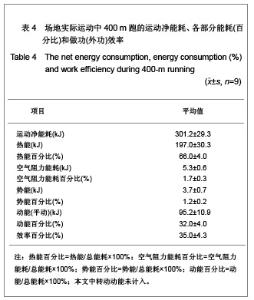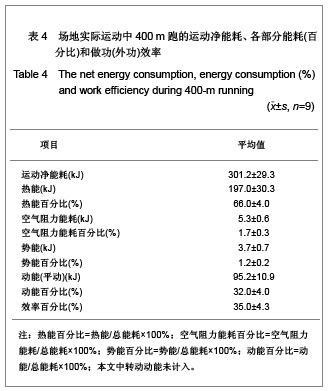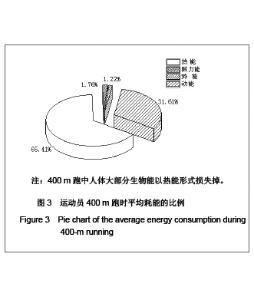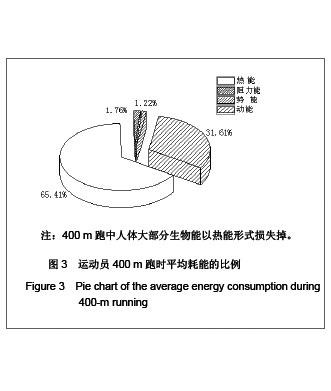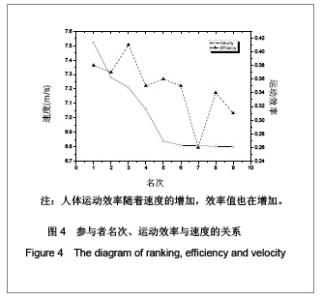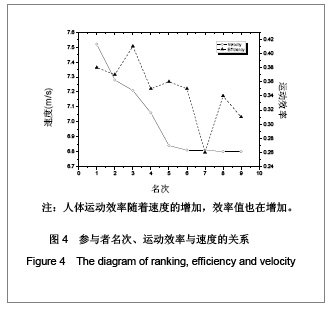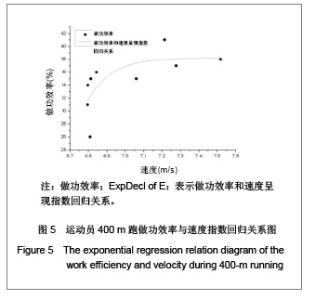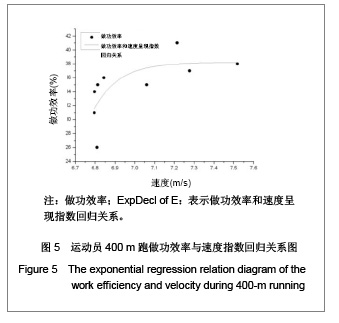| [1] Traballesi M, Porcacchia P, Averna T, et al. Energy cost of walking measurements in subjects with lower limb amputations: a comparison study between floor and treadmill test. Gait Posture. 2008;27(1):70-75. [2] Cavagna GA, Saibene FP, Margaria R. Mechanical work in running. J Appl Physiol. 1964;19:249-256.[3] Hill AV. The efficiency of mechanical power development during muscular shortening and its relation to load. Proc R Soc Lond B Biol Sci. 1964;159:319-324.[4] Lloyd BB. The energetics of running: an analysis of world records. Adv Sci. 1966;22(103):515-530.[5] Pugh LG. The influence of wind resistance in running and walking and the mechanical efficiency of work against horizontal or vertical forces. J Physiol. 1971;213(2):255-276.[6] Lloyd BB, Zacks RM. The mechanical efficiency of treadmill running against a horizontal impeding force. J Physiol. 1972; 223(2):355-363.[7] Zacks RM. The mechanical efficiencies of running and bicycling against a horizontal impeding force. Int Z Angew Physiol. 1973;31(4):249-258.[8] Asmussen E, Bonde-Petersen F. Apparent efficiency and storage of elastic energy in human muscles during exercise. Acta Physiol Scand. 1974;92(4):537-545.[9] Yan BT, Gao XY, Zhang BQ, et al. Zhongguo Linchuang Kangfu. 2006;10(40):34-36. 严波涛,高新友,张伯强,等.人体运动能耗和效率的动作分解测量方法[J].中国临床康复,2006,10(40):34-36. [10] Umberger BR. Stance and swing phase costs in human walking. J R Soc Interface. 2010;7(50):1329-1340.[11] Rubenson J, Lloyd DG, Heliams DB, et al. Adaptations for economical bipedal running: the effect of limb structure on three-dimensional joint mechanics. J R Soc Interface. 2011;8(58):740-755. [12] Umberger BR, Martin PE. Mechanical power and efficiency of level walking with different stride rates. J Exp Biol. 2007;210(Pt 18):3255-3265. [13] Sasaki K, Neptune RR, Kautz SA. The relationships between muscle, external, internal and joint mechanical work during normal walking. J Exp Biol. 2009;212(Pt 5):738-744.[14] Zheng XY, Hou M, Xin DL, et al. Beijing: National Defence Industry Press. 2002. 郑秀媛,侯曼,忻鼎亮,等.现代运动生物力学[M].北京:国防工业出版社,2002.[15] Xin DL. Shanghai:Donghua University Press Co. Ltd. 2002: 63-66. 忻鼎亮.运动生物力学[M].上海:东华大学出版社.2002:63-66.[16] Ward-Smith AJ. A mathematical theory of running, based on the first law of thermodynamics, and its application to the performance of world-class athletes. J Biomech. 1985; 18(5): 337-349.[17] Ward-Smith AJ. Energy conversion strategies during 100 m sprinting. J Sports Sci. 2001;19(9):701-710.[18] Kashiwazaki H, Inaoka T, Suzuki T, et al. Correlations of pedometer readings with energy expenditure in workers during free-living daily activities. Eur J Appl Physiol Occup Physiol. 1986;54(6):585-590.[19] Yang CC, Hsu YL. A review of accelerometry-based wearable motion detectors for physical activity monitoring. Sensors (Basel). 2010;10(8):7772-7788. [20] Winter DA. Biomechanics and Motor Control of Human Movement. Hoboken: Wiley. 2009.[21] Fedak MA, Heglund NC, Taylor CR. Energetics and mechanics of terrestrial locomotion. II. Kinetic energy changes of the limbs and body as a function of speed and body size in birds and mammals. J Exp Biol. 1982;97:23-40.[22] Heglund NC, Cavagna GA, Taylor CR. Energetics and mechanics of terrestrial locomotion. III. Energy changes of the centre of mass as a function of speed and body size in birds and mammals. J Exp Biol. 1982;97:41-56.[23] Heglund NC, Fedak MA, Taylor CR, et al. Energetics and mechanics of terrestrial locomotion. IV. Total mechanical energy changes as a function of speed and body size in birds and mammals. J Exp Biol. 1982;97:57-66.[24] Taylor CR, Heglund NC, Maloiy GM. Energetics and mechanics of terrestrial locomotion. I. Metabolic energy consumption as a function of speed and body size in birds and mammals. J Exp Biol. 1982;97:1-21.[25] Kram R. Muscular force or work: what determines the metabolic energy cost of running? Exerc Sport Sci Rev. 2000; 28(3):138-143.[26] Pontzer H. A new model predicting locomotor cost from limb length via force production. J Exp Biol. 2005;208(Pt 8): 1513-1524.[27] Rubenson J, Marsh RL. Mechanical efficiency of limb swing during walking and running in guinea fowl (Numida meleagris). J Appl Physiol. 2009;106(5):1618-1630.[28] Marsh RL, Ellerby DJ, Carr JA, et al. Partitioning the energetics of walking and running: swinging the limbs is expensive. Science. 2004;303(5654):80-83.[29] Ferguson RA, Ball D, Krustrup P, et al. Muscle oxygen uptake and energy turnover during dynamic exercise at different contraction frequencies in humans. J Physiol. 2001;536(Pt 1): 261-271.[30] Gaesser GA, Brooks GA. Muscular efficiency during steady-rate exercise: effects of speed and work rate. J Appl Physiol. 1975 Jun;38(6):1132-1139.[31] Cavagna GA, Kaneko M. Mechanical work and efficiency in level walking and running. J Physiol. 1977;268(2):467-481.[32] Huang L, Ban W. Beijing Tiyu Shifan Xueyuan Xuebao. 1998 (1):52-57. 黄黎,边卫.人体运动效率的概念及计算法[J].北京体育师范学院学报,1998(1):52-57. |
